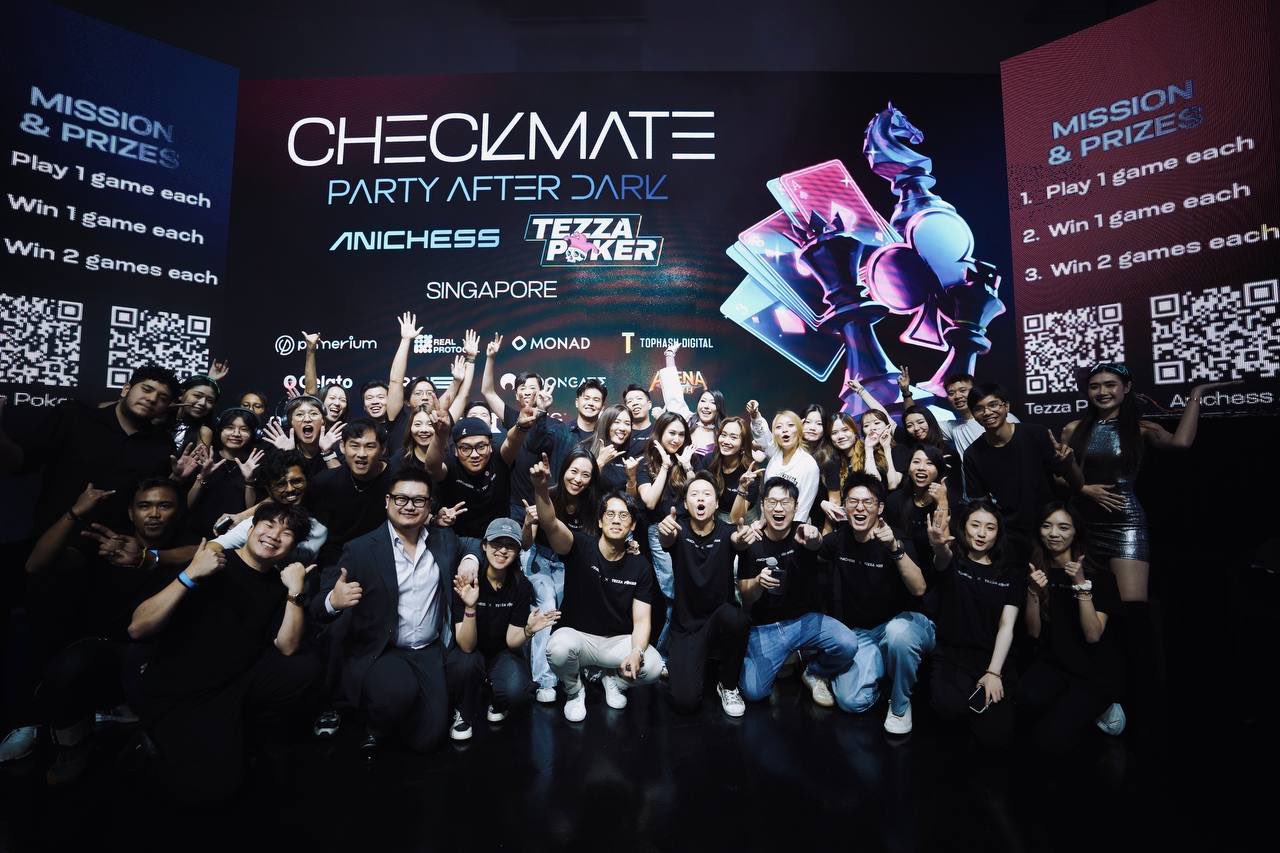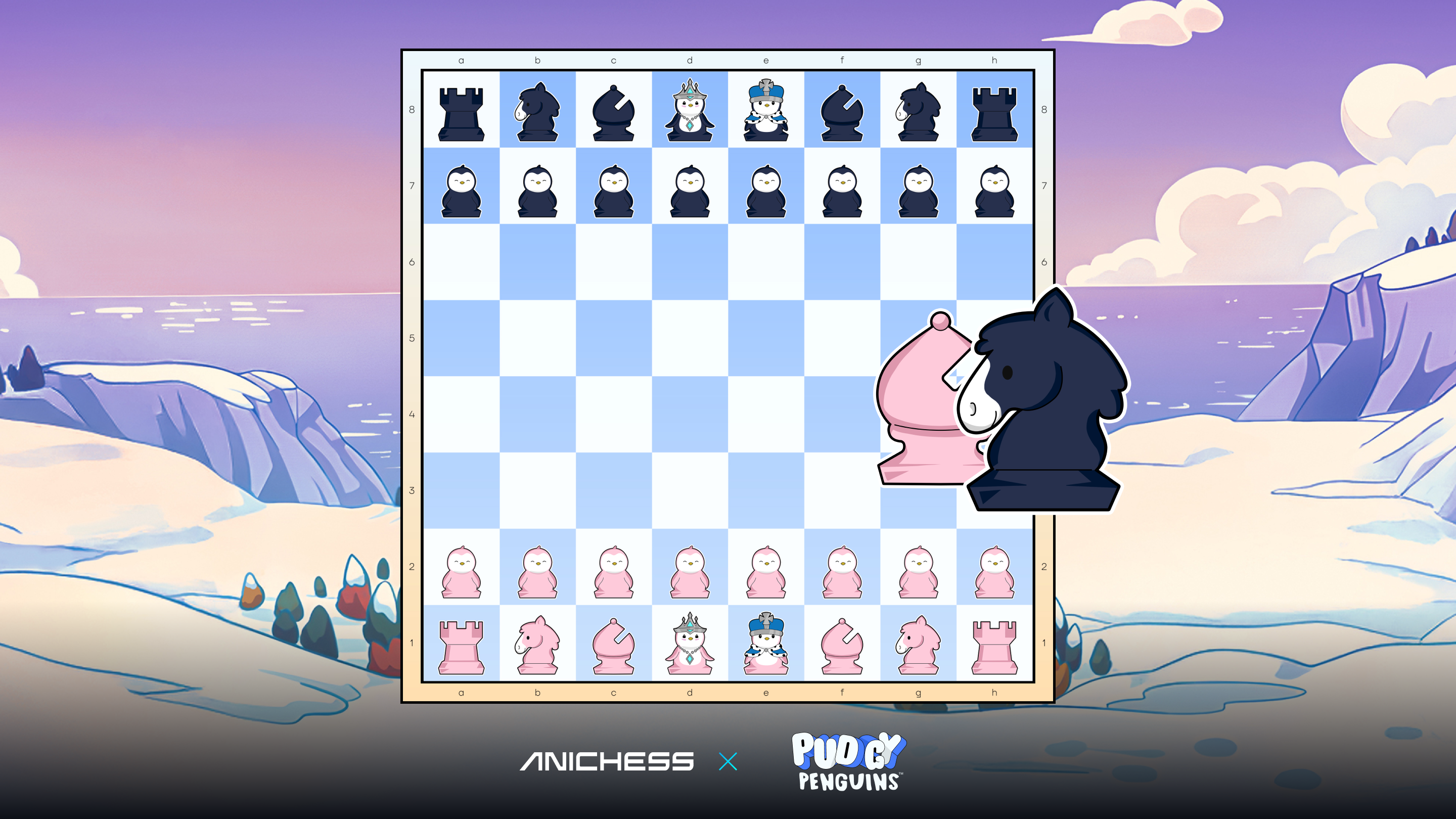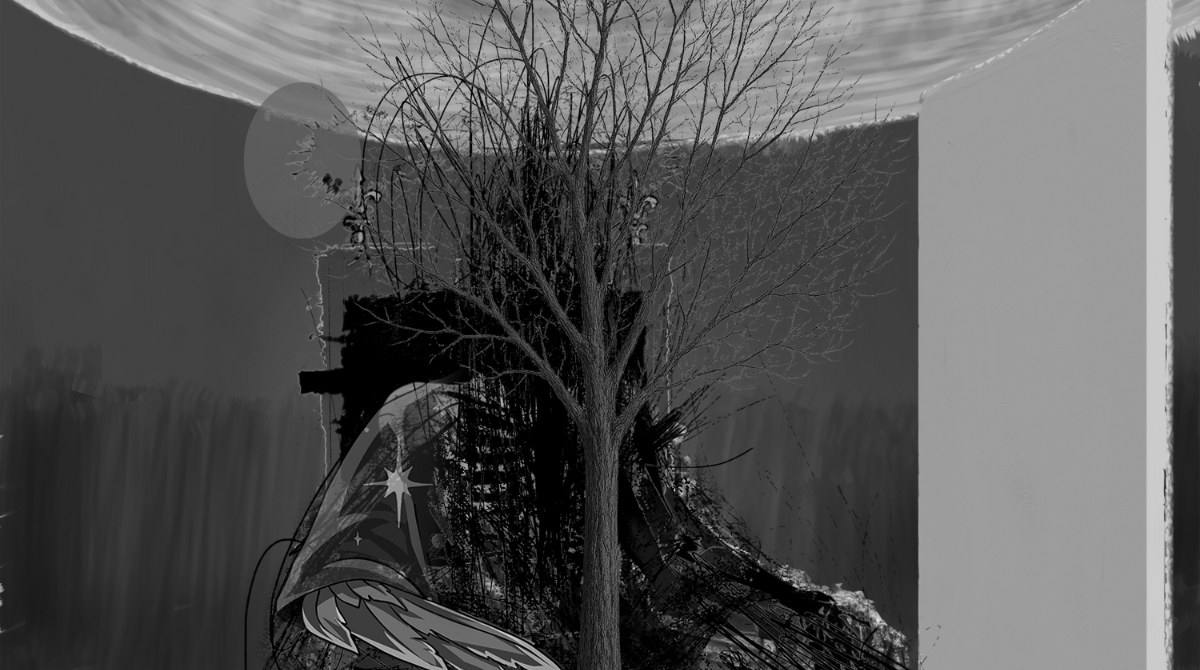What happens when the timeless strategy of chess meets the creativity of gaming and the innovation of web3? Anichess, developed by Animoca Brands in partnership with Chess.com and Magnus Carlsen, reimagines one of the world’s oldest games for a new generation of players. By weaving in magic, strategy, and blockchain technology, Anichess brings a fresh spin to the classic game.
In this conversation, Chevan Tin, head of Anichess, shares how the team reimagined a centuries-old game for the web3 era and why the future of Anichess is about more than just play. It is about community, creativity, and true digital ownership. Anichess invites both seasoned players and newcomers to experience chess in a whole new way.

Note: This interview has been edited for length and clarity.
OpenSea: What first inspired the idea behind Anichess, blending the strategy of chess with magic and web3 elements?
Chevan Tin: The idea originated in 2022 from an IP deal between Animoca Brands and Magnus Carlsen, the GOAT of chess, like Messi in football. At the time, the NFT market was booming and we planned to acquire the IP and launch NFTs. By the time the deal closed, the market had crashed about 90% from the peak.
And coincidentally, Magnus Carlsen’s company was acquired by Chess.com, which is basically the biggest online chess platform with over 200 million users. So that’s the origin.
We now have this massive partnership with Chess.com and a unique opportunity to bring 200 million players on board. What should we do? Given we’re building this in-house within Animoca Brands, and we have 20 years of gaming DNA in the company, the first thought was: why don’t we build a game, make it more fun, more innovative, and add a bit of magic to chess? We’ve observed changes in the chess market in recent years. One is the shift toward spectator sports. You can’t really imagine people watching a live stream where a player takes an hour to think of one move. You’d lose your viewers.
The growth of chess today is really about content, thanks to creators and to shows like The Queen’s Gambit. People have picked up chess again, and online chess content is rising. But it’s increasingly tilted toward variants: speed chess, Fischer Random, and even extreme forms like chess boxing, where you alternate rounds of boxing and chess. Those are fun and interesting.
I started playing chess when I was six, inspired by the Harry Potter scene where Harry, Ron, and Hermione play wizard’s chess in the dungeon. That pulled me into chess. I got competitive, won some prizes from age six through high school, and then pivoted into semi-pro poker for the past five years. I’ve also been a gamer for 20 years. It’s a unique mix—avid chess from a young age, gaming all my life, and poker mechanics. That’s why in the game you see spell mechanics—almost like Hearthstone with spell cards. At the same time, we blend in imperfect information like poker. For example, some spells can make a piece invisible for one turn, or set hidden traps on the board that last a few turns.
That takes away perfect information, which also makes it much harder to cheat. And cheating is a real issue in online chess. Another issue is the high skill threshold: people feel like they can never beat a grandmaster. With Anichess, you suddenly have a chance if you’re good with your spells. Even an average chess player can stand a chance against a grandmaster. That lowers the barrier to entry and makes it more fun, while the spell mechanics make cheating much harder. That’s why we can have crypto prize pools and buy-ins, like online poker.
OpenSea: I love that Harry Potter got you into chess. Before this interview I thought, “I should really watch The Queen’s Gambit again.” You mentioned you played chess growing up. Is that how you decided to get involved with Anichess?
Chevan Tin: I entered web3 through Axie Infinity. I was a management consultant at Boston Consulting Group for three years, and at the same time I was flipping JPEGs on OpenSea and exploring some GameFi projects like Axie Infinity with friends. Unfortunately, I got in at the peak and lost five figures early on. That didn’t stop me. I still believe in the web3 mission, but I see it differently now. It should reward skill, intellect, and contribution, not luck or hype.
In 2022, I got a cold outreach from a headhunter about a role at Animoca Brands. I thought, “Animoca? Let’s go.” I quit BCG and joined Animoca, starting in operations and projects, scaling the company, setting up teams and processes, while also getting hands-on with some priority projects. That included Anichess in its very early concept form. There was a chance to step up and take leadership of the project and blend in my personal experience and inspirations. That’s guided the project to this day.
OpenSea: Can you walk through how blockchain features and NFTs fit in the game?
Chevan Tin: This is critical, from onboarding to bringing people onchain. One area is skins. Chess pieces and boards can be NFTs. Right now they aren’t, we still have classic web2 skins, but down the roadmap they’ll all be NFTs. We believe NFTs are the right way to reward loyal users. If a player climbs to the top or contributes a lot of time and effort, they should be rewarded.
In web2, you buy skins but don’t actually own them. With Anichess, imagine the skins you earn, such as pieces, boards, and cosmetics, which you truly own as NFTs. Our youngest player is two years old from Indonesia, his dad is a passionate OG and has taught him since he was very young. Imagine a smooth user journey: Gmail login, free-to-play, no NFTs required to start. Let people fall in love with the game first. Down the line, when they reach certain levels or achievements, they can start to win things like NFTs or tokens. When they realize they can transfer or sell items, that’s the moment they’re onboarded to web3.
We avoid marketing ourselves as “GameFi” or a “crypto chess game,” especially when targeting a web2 audience. The web3 aspect should be a feature, not the headline, running behind the scenes.
There’s also an education angle. We’re building for the next generation of gamers and, through gameplay, teaching the next generation of financial literacy. Imagine that two-year-old growing up, and by six or seven he plays, earns something, and realizes he needs risk management and discipline. He learns not to go all-in, sees how effort translates to reward, maybe an ice cream, and picks up concepts you don’t need college finance to learn. Through game mechanics, they learn and are onboarded to the next generation of digital finance.

OpenSea: When web3 games first launched, many led with being “crypto games.” Recently, it feels like blockchain runs behind the scenes, you could play an entire game and not realize it’s technically in the web3 space. When people first come to Anichess, are they mainly web2 and later convert to web3, or is it closer to 50/50?
Chevan Tin: It’s closer to 50/50. As a project within Animoca Brands, we initially got a lot of web3 attention. We worked with Kaito and got on their capital launchpad about a month ago, with a community round that was 5x oversubscribed, and a strong presence on their leaderboard. That’s the web3 angle. At the same time, we never took our focus off web2. We’re building our TikTok, over 30 million content views already, and doing activations with Chess.com, ChessBase India, top players, and streams to bring in web2 audiences. Right now it’s roughly 50/50. Going forward, we’ll shift toward web2. There are only so many web3 gamers; the other 99% of gamers are out there for us to reach.
OpenSea: What current game modes are you most excited about? Any upcoming modes you’re releasing?
Chevan Tin: When we think about building the game and the token ecosystem, we see Anichess as the pilot game and launch partner of the Checkmate Ecosystem. The Checkmate Ecosystem aims to empower the next generation of strategic gamers through the CHECK token. Anichess is just one game; more games will join, some in-house, some partnered, and even community-submitted titles, as long as they give utility to the CHECK token and bring value to the ecosystem.
We’re sure “one token for one game” won’t make it. A token is meant to support an ecosystem. Anichess is a great start, especially on the back of the partnership with Chess.com and players like Magnus Carlsen. We want to keep building and polishing the game. In terms of modes, I’m most excited about Tournament Mode and Gambit Mode.
OpenSea: You mentioned the CHECK token and its utility. Are you able to share anything about the ecosystem or how players can use it in-game?
Chevan Tin: From a utility perspective, players can expect to use the CHECK token in Tournament and Gambit modes as the predominant buy-in, and prize pools will be in $CHECK. The platform will take a fee to sustain operations. Certain cosmetics or NFTs will be denominated in $CHECK. Crafting will also use $CHECK and include a burn: players collect fragments and, to craft skins or spells, need a formula like materials, some tokens, and experience points.
We also plan to facilitate a platform where people can submit games to join the Checkmate ecosystem. Stakers of $CHECK can vote on favorite projects each season; winning projects join the ecosystem and receive $CHECK to run the game and rewards pools. We expect more games to join, building a flywheel for $CHECK.

OpenSea: You’ve partnered with big names in the chess world. Any upcoming partnerships, features, or launches you’re excited about?
Chevan Tin: GameFi as a narrative isn’t as strong as it was three years ago, but we’re building more than just GameFi. What we’re creating is an ecosystem that connects strategy, education, and creativity across multiple games and experiences, powered by shared ownership and onchain identity.
Chess is more than a game, it’s culture, art, and a big collectibles space. We’ve partnered with Pudgy Penguins, where Pudgies take over the UI and skins. We launched a Soulbound token with Moonbirds and held a big activation last week in Singapore with Moonbirds and Pudgy.
Anichess can blend many IPs because we’re not locked into a rigid lore like League of Legends or Hearthstone. We have our own world, but we’re open to IP integrations, chessboards and pieces can fit any IP with the right color tones and logos. Every chessboard is like a blank canvas you can design. We believe the collectibles market is a natural extension. Imagine ripping digital packs: if you hit a legendary card, it could translate to a rare IRL chess set. That’s a direction we’re exploring, since many chess fans already collect sets and pieces.
OpenSea: Broadly, where do you think Anichess or Animoca Brands will be in the next year?
Chevan Tin: It’s hard to predict in this fast-moving space. Long-term, both Anichess and Animoca Brands will keep pushing mass adoption of tokens, NFTs, and crypto. We’re still very bullish on true digital property rights via NFTs, and on building ecosystems, not just single projects, realizing synergies across ecosystems, powered by crypto and the blockchain. For Anichess, we’ll strategically expand our ecosystem, empowering the community to build more games and shipping more titles internally. That grows the $CHECK flywheel. Anichess is also well-suited for esports; we anticipate it on big esports stages in the next one to two years. We already have an official partnership with Team Secret, a major esports team. Expect more utility for $CHECK and more projects adopting it to realize this synergy. The end goal is invisibly onboarding hundreds of millions of players onchain, without them even realizing it.
OpenSea: Before we wrap up, I’d love to touch on the community side of things. Can you tell me a bit about Anichess’s NFT collection and how you approached the Genesis mint?
Chevan Tin: Many projects either extract from day one by charging for mints, or do a free/low-price mint that goes 90% to farmers. We’ve been building for two to three years, but only minted our Genesis PFP in July because we didn’t want it to fall into the hands of extractors or farmers. We let the community grind the game for the past year, studied the data carefully, and hand-picked OGs and players who truly deserved the status and NFT. We did a free mint for them.
The total supply is 960, symbolizing Chess960, Fischer Random, representing innovation and free spirit in chess, which fits our brand. We believe you only need 1,000 die-hard fans over a billion farmers, so we kept the first collection small and carefully allocated spots. Since the free mint, we’ve been holding around a 0.5 ETH floor. We’re one of the few gaming NFT projects still holding up.
OpenSea: This has been great! Thank you for taking the time to chat with me today, Chev.
Chevan Tin: Thank you very much, Hannah.
Disclaimer: This content is for informational purposes only and should not be construed as financial or trading advice. References to specific projects, products, services, or tokens do not constitute an endorsement, sponsorship, or recommendation by OpenSea. OpenSea does not guarantee the accuracy or completeness of the information presented, and readers should independently verify any claims made herein before acting on them. Readers are solely responsible for conducting their own due diligence before making any decisions.





.avif)
.png)
.png)




.png)
.png)